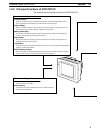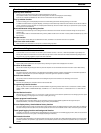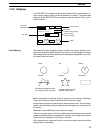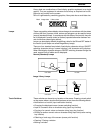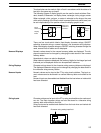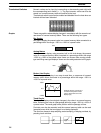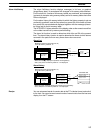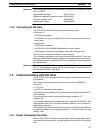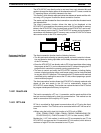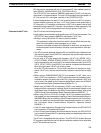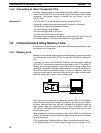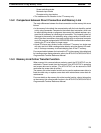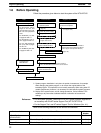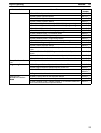
1-4SectionCommunications with the Host
17
Reference: The following optional devices are available. All of them can be used either with
NT31 or NT31C.
Replacement backlight NT31C-CFL01
Reflection-suppressing protective sheet NT30-KBA04
Chemical-resistant cover NT30-KBA01
Replacement battery 3G2A9-BAT08
1-3-2 Connecting to the Host
The NT31/NT31C has the following two communication ports.
• Serial port A:
D-SUB 9-pin connector
For RS-232C use only (The Support Tool and bar code readers can be con-
nected here.)
• Serial port B:
D-SUB 25-pin connector
For RS-232C or RS-422A/485 (Selectable by memory switch)
(The Support Tool and bar code readers cannot be connected here.)
The host can be connected at either of these two ports.
The connection methods for each communication method at the PT and host
sides are indicated below. Make the settings in accordance with the communica-
tion method that can be used with the PC to be connected and the conditions at
the operation site.
Reference: When using an RS-232C/422A convertor unit (NT-AL001) with the host link or NT
link (1:1) communication method, RS-485 cannot be used. The connection must
be made with RS-232C or RS-422A.
1-4 Communications with the Host
The NT31/NT31C is connected to the host by one of the following communica-
tion methods.
The following communications can be used to connect an OMRON PC:
• Host link
• 1:1 NT Link
• 1:N NT Link (standard or high-speed)
The following communications can be used to connect another companies’ PC
or FA computer:
• Communications protocol supported by the other company’s PC
• Memory link
In all of these communication methods that can be used with NT31/NT31C, data
communication with host is by direct connection (Memory link is, however, a
quasi-direct connection).
In the following, the host link and NT link that carry out the direct connection will
be discussed. Memory links will be explained in 1-5 Communications Using
Memory Links.
1-4-1 Direct Connection Function
With the NT31/NT31C, the bits and words referring to data required for display,
and those for storing input data, can be allocated to any part of the PC memory
area.



